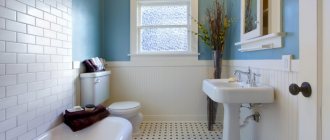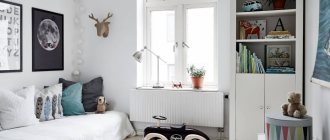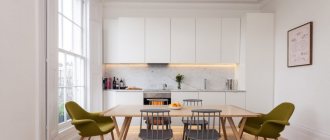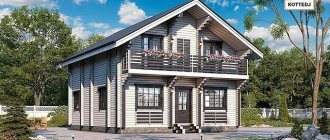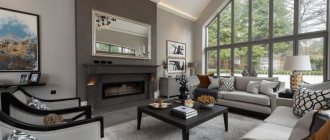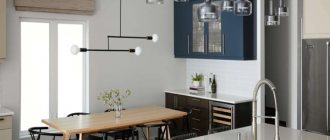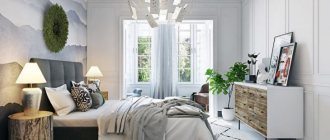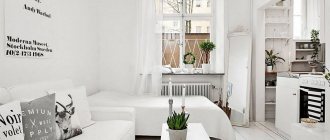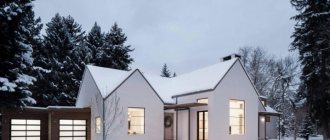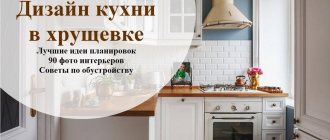Simplicity, conciseness and versatility are the key touches of the Scandinavian style, which has become widespread in landscape design. The popular trend of arranging personal plots originated in the northern countries, for whose people the main task was to create a cozy garden that was harmoniously combined with nature, capable of withstanding the test of bad weather. The climate and topography of these regions have characteristic differences. But in the design of the household plots of the residents inhabiting the peninsula, it is easy to detect common features. Which ones exactly – read on.
What is characteristic of the Scandinavian style? The main feature of this direction is a close unity with nature and a life-affirming attitude. Thanks to this, the landscape, decorated in the Scandinavian style, is conducive to a pleasant holiday and at the same time charges you with energy and vivacity.
Scandinavian style successfully combines trends and styles that have developed in the northern regions of Scandinavia: Denmark, Sweden and Norway
Scandinavian style is distinguished by natural simplicity, which borders on strict restraint of design, and functionality.
But at the same time, the arrangement of the site in the Scandinavian style involves the use of rich, rich colors. In conditions of scarcity of daylight and harsh, long winters characteristic of the North, light tones and bright colors help make the garden more comfortable and bright.
Key elements that characterize the Scandinavian style:
- Open plan;
- Hedge fences instead of fences;
- Containers with flowers instead of flower beds;
- Paved rectangular areas;
- Natural clearings and oases with wild plants;
- Unedged lawns without flower beds;
- An artificial pond of irregular shape;
- Presence of a heather garden.
In the design of a Scandinavian site you will not find artificial decorations. Instead, the garden is decorated with large stones and boulders, distributed throughout the area at first glance without any special system. All elements of landscape design are distinguished by clear lines and correct geometric shapes.
Heather gardens help ensure unity with nature - lovely oases that effectively emphasize the tenderness and lyricism of the landscape
A successful addition to a heather garden can be a small vegetable garden consisting of just a few neatly decorated beds. To maintain the style, the beds can be framed with board frames, and the passages between them can be filled with gravel.
The main advantage of Scandinavian design is the ability to create a picturesque Nordic corner even on a small piece of land. Most of the shrubs and flowers that are used in the design of Scandinavian plots are not difficult to find in our latitudes.
- 2 Small architectural forms
- 3 Arrangement of a decorative pond
- 4 Garden furniture with character
Spacious terrace - the heart of the dacha
Even the smallest house will be transformed and become more spacious if you create a beautiful and cozy terrace. It increases the usable area of the house, literally becoming an additional room. You will need quality wooden boards, tools and a couple of days off.
Place a wicker chair, several cozy wooden chairs and a table on the terrace so that you can have tea, read your favorite book or enjoy nature in silence.
Partition made of slats instead of a wall
A slatted partition will help make the room visually wider and brighter. This is a very original and stylish solution. The use of slatted partitions instead of conventional solid walls will be especially important for the attic, since there is almost always a lack of lighting there.
In Scandinavian countries, wooden slats are usually used, as it is a natural and environmentally friendly material.
Open space
Scandinavians love space and do not like partitions at all. Therefore, it would be appropriate to combine the kitchen with the dining room or even the living room, so that it is one large and cozy space, conventionally separated by design techniques and decorative elements.
It will be especially useful to combine several rooms in a country house if it has a small area.
Colored floor or ceiling
In Scandinavian countries there is little sun, so local residents often paint their indoor ceilings in bright sunny colors. A yellow ceiling in combination with white walls will look especially harmonious.
Related article: How to decorate a mirror with your own hands [5 good ideas]
The floor is also sometimes painted in bright colors. Using different shades you can zone the space. Rooms with such color accents don't even need additional decoration.
Natural furniture
A country house is the perfect place to recreate an eco-friendly interior. Choose simple and high-quality furniture made of wood, rattan, possibly with forged parts and natural textiles.
The Scandinavian interior assumes maximum use of natural elements. Scandinavians are quite close to nature, so their homes often reflect this connection both externally and internally. Externally, their houses are designed in such a way as not to disturb the landscape, and inside, living plants are placed everywhere, natural materials are used, as well as the elements: fire, water.
Stones as part of the decor
The further north the climate zone where the Scandinavian garden will be laid out, the smaller the choice of plants for its arrangement. Therefore, designers recommend approaching the design process creatively. If plants grow poorly, then an abundance of stone is an excellent design solution. Natural material will look harmonious on the site, laid out among groups of living plants, but it is important not to overdo it. Stones of different shapes and sizes can be used either singly or in groups. In group placement, you can use a design technique so that the stone composition does not look boring and group stones of different types:
- natural boulders;
- chips of granite and marble;
- stones of different shades;
- sea pebbles, which are also suitable for beautifying paths.
A small stone garden in the overall composition of the local area will look mystical, but you can add mystery to it by turning on your own imagination. For example, in the middle of a neat green lawn, place a huge boulder, as if it had fallen from the sky. Along paths or in thickets of plants, install benches made of natural wood and natural shapes, reminiscent of a recently felled trunk.
Fireplace
It's about natural elements! The Scandinavians can find a fireplace not only in a private house, but even in an apartment. They love to create corners where they can wrap themselves in a blanket and watch the flames for hours. A Scandinavian-style country house must have a fireplace. You can install a modern fireplace, which is hidden behind glass, or a simple potbelly stove, which can be installed in a finished house.
Generalization on the topic
Scandinavian countries are very original. But due to their northern location, their peoples have similar ideas about the beauty of landscape design. Naturalness and simplicity, freshness and spaciousness are valued here. Everything should reflect the desire and ability to live beautifully and happily. There is no aristocracy in the character of local gardens, but the landscaping around the cottages still looks very respectable. That is why the described direction is becoming so popular in other countries of the world.
Ratings 0
Window
Ideally, these are spacious panoramic windows that are not curtained. If possible, you can install high transparent doors or wooden doors with windows on the ground floor of the house. The dacha should have a lot of light and the sun's rays should penetrate the house without hindrance.
Second life for old things
Usually, a huge amount of old things accumulate at the dacha. There is no need to rush to throw them away, you should give them a second chance. If you experiment and don’t be afraid to use your imagination, you can find new uses for almost any thing.
For example, an old teapot will be an excellent flower pot, and a grater will be an excellent pencil holder.
Decor and textiles
Use wood. Let it be wooden beams on the ceiling, wooden furniture, plant boxes made of untreated wood, a massive wooden table and chair, wooden decor in the form of deer or elk figures.
Use textiles. At the dacha, tablecloths on tables would also be appropriate (which can rarely be found in Scandinavian apartments), even if they are textile pillows with traditional patterns, or a small soft carpet with a geometric pattern.
Take a closer look at vintage items. An old wooden chest of drawers with luxurious wrought iron fittings, an antique wall clock, a great-grandfather’s suitcase, an aunt’s antique sewing machine. All these things will help create an unusual and pleasant atmosphere at the dacha. But don’t get carried away with the decor, because your Scandinavian-style dacha is not an attic where all things go when no longer needed.
In a country house, the Scandinavian interior is surprisingly transformed, transformed into a Scandinavian rural style or Scandinavian Provence.
Selection of plants for such a garden
It is difficult to imagine a Scandinavian garden without evergreens. The main decoration of the garden area are pines, junipers, spruces and pyramidal thujas. Multi-tiered flower beds in Scandinavian design replace all kinds of outdoor pots and flowerpots. Hydrangeas, yews, and boxwoods look impressive in containers.
Low-maintenance boxwoods lend themselves well to pruning. Their crowns can be given original pyramidal and round shapes
A gazebo or recreation area can be lined with climbing plants. Ideal for these purposes: climbing beans, hops, morning glory, ivy, clematis.
Typical of the Scandinavian garden are miniature greenhouses, under the roof of which heat-loving ornamental plants are grown.
When creating flower arrangements, the most popular are: lavender, rhododendron, peony, poppies and daisies, as well as any wildflowers
Elegant lawns of phlox, asters, calendula and flax, like islands, are found every now and then in different corners of the garden. These joyful oases add a special charm to the Nordic garden. And the atmosphere of the Scandinavian tribes will be created by semi-wild cereals.
The following are ideal for arranging rocky gardens: Carpathian bellflower, Alpine carnation, sedum and creeping gypsophila.
The perimeter of the site is often framed by trees. Mixed plantings of lilac, birch, aspen, spruce and pine look unusually picturesque
When choosing plants, you should be guided by the principle that the overall appearance of the garden should remain discreet and simple, and only its individual elements can stand out with bright colors.
Scandinavian loft
This symbiosis of styles is perhaps the most suitable option for an existing home. You can easily afford to leave part of the brick wall without decoration, do not deliberately hide pipes or other communications, and do not level the walls to perfect condition. There is no need to try to be a perfectionist and “lick” every meter of the room. The house will then be “alive” when it has its own shortcomings, whims and character.
Scandinavian interior color palette
The main feature of the whole style is its light multi-tonal palette. Despite the abundance of white colors in the interior, namely, they allow even small “Scandinavian” rooms to be given the volume necessary for a comfortable life, the interior in no case looks too cold, rather, on the contrary, it always seems like you are sitting near a lit fireplace.
The secret of this effect is quite simple.
The palette uses not only pure, snow-white tones, but also paints mixed with yellow and brown. That is, the color of wet sand, ivory or cream. By wisely combining these colors, you can avoid frosty contrasts and transform the created atmosphere into a channel of warm calm.
A matte or even corrugated wall texture will also help to avoid unnecessary ice. With any other tones, it would hide the space, but here it only raises the temperature in the apartment, making the atmosphere more homely.
In this case, special attention should be paid to such underrated design qualities as tactility. It’s not enough to paint the walls and ceiling in the desired color and choose the right texture; the surfaces should also be pleasant to the touch.
Keep an eye on the exterior
Not only the interior decoration should reflect the character and principles of the Scandinavian style, but the exterior should also be closely related to the interior. Take care of the lawn, make paths from wooden planks, create impromptu flower beds using boulders, and plant climbing plants near the house.
If there is a garden on the territory, be sure to take advantage of its thickets and place a small gazebo or hang a hammock. In general, the courtyard of a country house is an ideal place for various art installations. Here you can place your works made of clay, crafts made from natural materials, try your hand at trash art by planting plants in rubber boots or old teapots.
You will achieve a harmonious Scandinavian interior in a country house when you play along with the age of the house, filling it with those interior and household items that are close in spirit. Don't try to modernize it, but rather maintain its charm by adding a little organization and coziness.
Decorations on the wall
In Scandinavia they value the comfort and warmth of their home. You can turn a boring gray room into a cute corner with the help of photographs of loved ones, favorite paintings or flowers.
By the way, plants on the walls will not only perform a decorative function, but will also create a comfortable microclimate in the room. Flowers can simply be placed on a shelf, but the option with wall pots will look even better.
Scandinavian style kitchen
One of the most difficult rooms in terms of creating an interior has always been the kitchen. In most cases, in a small room you need to somehow accommodate a food preparation area, a dining area, and even a small storage area for food. At the same time, under no circumstances should it be crowded there.
The task is just right for Scandinavian design. Light colors, appliances built into the wall and a huge window significantly expand the space and make every available square as functional as possible. The only thing that confuses some housewives here is that the floor is soiled, but if you look closely, it is rarely really white. If tiles are used, then they choose sand shades, and those, as you know, do not get dirty well.
But the real highlight of the Swedish galley is the brushed chrome. It doesn’t need to be polished, but it still brings male dominance into the environment.
What is it characterized by?
Any terrain and location of the site is suitable for the Scandinavian style. Remember photographs or pictures you have seen from northern European countries that reflect local life and landscape. Peace, mountains in the distance in the background, foggy haze, Norwegian fjords, a feeling of unity with nature and distance from noisy civilization. In general, this style, like Scandinavia itself, is associated with restraint, orderliness, functionality and simplicity. But it wouldn’t hurt to include bright, colorful accents in the form of flower beds or variegated compositions of shrubs.
Everything should be located quite compactly, with a distinction between different functional areas. Materials and plantings must withstand adverse environmental conditions over time. Decorative sculptures with fairy-tale characters (gnomes, trolls, fairies, goblins) would be appropriate here. For inspiration, look through children's books with images of your favorite forest characters. The general atmosphere of the garden should create such an impression that it is as if someone from a fairy tale had just been here, but was absent for a moment.
Garden gnomes
Color solutions and materials
In the color scheme, you should give preference to natural shades (brown, green, gray). For accent “spots” it is possible to use red, yellow, orange and blue. Don't be afraid to experiment with your paint palette and make unconventional decisions.
The materials must also be natural. Stone and wood are two favorites for the chosen direction. Large boulders and blocks should be placed throughout the area in a chaotic manner. Choose the types of stone that are most common in your region.
From stone cuts you can make steps that “by themselves” formed so well that you can’t even see the human hand attached to them. Granite paving stones and limestone are suitable for platforms and paths. Benches and chairs can be made from sawn logs and stumps. Furniture made from wicker and rattan will also fit very harmoniously into the overall picture.
Garden bench made of logs
Tips from landscape designers for decorating a garden in a northern style
Here are some recommendations from experts on arranging a garden plot in the Scandinavian style
Be in nature more
During the warmer months, spend as much time outdoors as possible. In the kitchen, bedroom or living room, install large windows and, if possible, access to the garden, which you can access in the summer. Set up a summer kitchen with a couple of shelves under the eaves where you can store plates and cups. Nearby, install an outdoor faucet for washing dishes, a dining table with chairs and a grill. This will be an incentive to spend more time in the garden.
Use recycled materials in your design
Use natural and recycled materials. Weathered wood, old well-kept benches and metal buckets or piles turned into flower pots will give your site simplicity and modesty.
What color palette to use
Use colors that are often found in northern nature. Gray, brown, white and green backgrounds will complement the plants and trees in the surrounding Scandinavian landscape.
Minimalism in the Scandinavian garden
Take a minimalist approach to design elements such as paths and fences to allow them to blend in with the natural surroundings of your property. Don't try to manage your garden. After flowering, let your plants' seeds spread on their own. Plant your plants between the stones. Keep your plants minimally pruned.
Look after your plants
Pay attention to the plants that bloom in your garden, how happy they are with sunlight, soil and moisture. Let them spread as they please and don't waste time on crops that don't do well in your garden.
Use light wisely
In Scandinavia, poor sunlight is a fact of life. In your garden, you can determine how light moves through your area. What elements - outbuildings, tall trees - create shady areas in the garden. How sunlight enters your garden in spring, summer and fall. This will be the main criterion for choosing where to plant your plants.
Plot
0 votes
+
Vote for!
—
Vote against!
A well-kept garden in the Scandinavian style resembles the scenery from films about fairy-tale gnomes who have just gone somewhere. Or it looks like some unrealistically cozy place where everything is so natural and natural, with the exception of a few landscape decorations with signs of pruning of bushes. In a plot with a fresh lawn, small objects made from natural materials are held in high esteem. This style looks casual and at the same time so well-groomed, where everything is done with love for nature. And this is quite justified, because the summer season in the Scandinavian countries is so short, and it is important to have time to enjoy this beauty. Therefore, this style of summer cottage is gaining popularity - we have a lot to learn from European peoples.
Table of contents:
- Features of Scandinavian style
- What is important to know to design a garden in a Scandinavian style?
- What plants to choose for a Scandinavian garden?
Features of Scandinavian style
The Scandinavian style is characterized by:
- simplicity;
- restraint;
- orderliness;
- functionality;
- naturalness.
This applies not only to landscape design, but also to architecture, arts and crafts and interior furnishings. However, to understand the basis of this style, it is important to take into account the mental characteristics of the inhabitants of the northern part of Europe. They live in a climate zone where there is little sun, summer is short, and winter is 2/3 of the year, the rest of the time there is continuous snow cover or a gray, foggy reality outside the window. Scandinavia has a harsh climate, a lot of stone and snow, poor soil, and warmth and lush vegetation only appear for a short time. It is this time that Norwegians, Finns, Danes and Swedes value very much, trying to improve every section of the local area.
During the long winter, residents of the northern territories do not see bright colors and lush greenery; they really need it, to contemplate the long-awaited primroses. Often the absence of garden plants and fruit trees is replaced with bright decorations in landscape design. This style readily accepts:
- wood sculptures;
- compositions made of stones;
- garden benches, arches and gazebos made of natural wood;
- an abundance of evergreens, most often conifers.
This makes it possible to decorate your garden plot and at least somehow compensate for the lack of lush plants and flowers in which the southern regions are usually surrounded. Scandinavians are very economical people who value good quality and comfort in the simplest forms. But they are also not alien to a special understanding of aesthetics, for example, in the form of intricate forms. Therefore, along with the natural decorations of their garden, they willingly use fancy sculptures and trimmed shrubs in the form of curly hedges, square and round objects. A striking example is Scandinavian style design, photo:
In art historical reference books, Scandinavian style is characterized as one of the varieties of classical functionalism. This style is lively and flexible, it is still being formed today, but it acquired recognizable features in Sweden and Norway more than a century ago.
As a type of landscape design, this style is in great demand in Europe, but here it is just catching on. However, a Scandinavian-style dacha will always stand out against the background of neighboring plots. The advantages of this style were also appreciated by Russian northerners, who have the same climatic problems and restrictions on planting heat-loving perennials.
Another characteristic feature of a Scandinavian-style garden is its compact size. A typically “Scandinavian” courtyard with an adjacent garden is usually small in area, but very well-groomed and aesthetically pleasing. On 5-10 acres you can see:
- paths paved with stones;
- wooden fences;
- green lawns;
- an area reminiscent of a “wild” forest;
- group plantings of dwarf conifers;
- neatly trimmed small hedges;
- original benches;
- fenced flower beds and flower beds;
- garden decor and small homemade ponds.
In this landscape design, the main preference is given to living greenery and decorative ornaments made from natural materials. In the modern version, the owners of a “Scandinavian” site sometimes decorate a summer kitchen, bathhouse or gazebo with barbecue as a funny “gnome house”, which looks very organic. Look at an example - Scandinavian style, photo:
What is important to know to design a garden in a Scandinavian style?
It is important to approach creatively when designing a Scandinavian site, taking into account northern climatic features. A lot of stone is an excellent design find where plants do not take root well. However, you should not fill the area with boulders or specially treated stones. This is also typical for other styles, for example, the “glacier garden”, alpine slides in traditional landscape design or the Japanese isigumi rock garden. This natural material always looks great on the site, with proper design and planting of living plants, but excess stone destroys the very concept of the garden.
Stones of different sizes are used in groups or individually. And if this material is in abundance, then single boulders or flat stone steps will be very organic in a Scandinavian-style dacha.
Tip: To prevent stone decoration from looking uninviting and monotonous, use a different type of material:
- natural boulders and cobblestones;
- crushed granite and marble;
- small stones of different colors;
- naturally polished sea pebbles (for laying paths and cladding small buildings).
Since a stone garden always looks somehow mystical, it is possible to add some mystery to your “Scandinavian” garden. For example, a neat stone path in the middle of a green lawn in the center may abut some large boulder with the name, meteorite, “stone of wisdom” or “center of happiness”. Your guests will appreciate such a designer find, especially if this corner is decorated properly. It would be nice to place benches of an original shape next to each other, decorated with a cut of a large tree. There should be some shade in such a place to spend time having friendly conversations after lunch.
Stone is a fertile material for original landscape design, including a Scandinavian-style garden. They do everything they can with it, and even some chaos or creative disorder can look like an art object. Paved paths made of stones of various shapes or steps of a small descent to an artificial pond are an excellent decoration for your site in this style.
More interesting additions are stone arches and artificial grottoes as part of a garden fence. This material is also used to lay out “hearths”, areas for grills or barbecues. The best addition is an original wooden table and benches where freshly prepared kebabs or smoky sausages are laid out. The shape of such a platform for a fireplace with a stone fence can be different:
- round;
- square;
- rectangular;
- arbitrary;
- fantasy.
The best design option for a site in the Scandinavian style is when the natural features of your site are preserved as much as possible. This is not the case when they took a drawing of their 5 acres, uprooted all the old trees and bulldozed the site for a new landscape design project. On the contrary, even a dry trunk with a hollow will find proper use here.
Carefully cut branches and dead wood twigs can be used for crafts, and the trunk can be used as a place for hanging flower pots. A hollow, real or imitation, would be nice to decorate as the house of an owl or woodpecker. Of course, figurines of these or other characters that are as similar as possible to real birds will have to be found and purchased separately. But this “creation” may be the most original decoration of your Scandinavian garden.
Not only forest animals, but also other sculptures, figurines or decorations would also be appropriate. A characteristic feature of this style is the presence of all kinds of mystical characters in the garden:
- trolls;
- gnomes;
- goblins.
And it’s easy to design a garden scarecrow in the form of a Viking or a flying Valkyrie, and this will also look very original on a Scandinavian-style plot.
If we talk about garden furniture, then there is no place for white plastic sets. Everything is made only from natural materials. And if you want to add luxury, then a wicker set of rattan chairs or its artificial imitation will do. Landscape design in the Scandinavian style accepts products made from wicker, various wickerwork and baskets, which can be very functional or simply an addition to some composition or original idea. For example, indoor plants do not have to be planted directly into the soil for the summer.
Tip: Transplant fast-growing plants into larger containers with new, enriched soil. Simply place white plastic pots in wicker baskets, baskets or birch bark boxes in the garden. Then, after the summer season, they will not need to be replanted, and the flowers will again look harmonious on the white plastic window sills of your house or apartment.
Many interesting ideas and additions to traditional landscape design came precisely from Scandinavian garden style. An excellent addition to the Scandinavian style of a summer cottage will be antique or rare items. They can be used as decorations, coasters, plant pots or flower pots in the garden:
- spindle;
- more like a cart wheel;
- a rusty plow that seemed stuck at the end of a garden bed;
- shards of ceramics and large antique dishes;
- Grandfather's old chrome boots;
- barrels, tubs and other unnecessary containers;
- wooden carts and stretchers.
Large, low-growing trees and shrubs in the garden are another characteristic feature of the Scandinavian style. Single planting of tall trees is also encouraged, and in Northern Europe they are planted very close to the wall of a house or fence. A single tree with a flat crown can grow right in the middle of a manicured lawn or lawn. A swing for children and bird feeders are hung on one of the lower strong branches.
Whether to make a vegetable garden on a plot in this style is a personal matter for the owner, but our summer residents see this as the meaning of country life. A small plantation or well-tended beds do not contradict Scandinavian design. But if you want them to not fall out of their general concept, the beds should be more like flower beds with neat stone borders. They must be strictly defined in shape and complemented by sand-strewn paths.
It is important that the beds are neat, even decorative. And if you want to have a greenhouse and a traditional vegetable garden, then it is better to place them behind a wicker fence or low masonry. A popular idea for a living fence to delimit a garden area is climbing (climbing) plants. They can also twine around a wooden gazebo.
What plants to choose for a Scandinavian garden?
When choosing planting material for decorating a site in a Scandinavian style, any plants that are acclimatized to your region or northern latitudes are suitable. Dwarf and weeping forms of traditional trees will also be an excellent decoration. Many people know how beautiful rowan and birch trees look with their branches hanging down. Small coniferous plants, for example, juniper or blue spruce, familiar to the north-west of Russia, are also suitable for the northern garden. The catalogs also offer acclimatized forms of other conifers, which can be purchased from catalogs or in specialized stores for landscape design.
Attention: When choosing plants of Dutch selection for your garden from mailing catalogs, be sure to check whether they are adapted for your region! There are many original forms that grow well in the northern mountainous regions of Europe and Asia.
Many people are interested in the question of how acceptable the proximity of traditional fruit trees and shrubs and decorative forms for landscape design is. And here it is important to look at the plant itself - if it fits organically into the overall design concept, it is planted in the foreground. The remaining fruit trees and shrubs are removed to the background and to remote corners of the garden. But among the Scandinavians, the overall appearance of garden vegetation looks discreet, but they use spectacular accents.
For example, if gooseberries grow in your region, use densely planted bushes, but trim them in the form of a hedge. Then there will be a harvest, early green leaves, and excellent fencing. The same applies to flowering shrubs, but lilac, for example, is better to choose a white variety rather than a bright purple one.
Various perennials, which do not require special care, are also very popular for landscaping. This is due to the fact that summer in Scandinavian countries is short, and people don’t have time to get around to everything. So there is no point in choosing plants for a northern garden that require painstaking care and daily planting.
The exception is low-growing annual flowers, which can be sown along neatly paved paths in spring or autumn. Don't forget also about the snowdrops that grow in your region. Crocuses and other primroses are traditionally among the first to delight summer residents. Just plant them not in a decorative flower bed, but as if they suddenly grew here on their own.
Our illustrations show excellent examples of how you can fill a Scandinavian-style garden with our plants.
Scandinavian style bedroom
Despite all the severity of the style, the Scandinavian bedroom is distinguished by its warmth and comfort. It doesn't look like a hospital bed at all, and that's helped by the many warm accents. As a rule, these are various pillows or even wall paintings.
For example, one almost never does without a national ornament at the head of the bed. It might seem like a small thing, but there is so much warmth.
In general, when they say that the motto of this interior is: “More beautiful things for every day,” then this applies most of all to the bedroom.
What can I say, see for yourself:
As you can see, there is no oversaturation of details, there is no hidden lighting usual for other interiors, and from the zones there is only one sleeping place. But in a Scandinavian bedchamber you can really relax not only your body, but also your soul. And yes, take note, the fur of wild animals will look good there; after all, Scandinavians are good hunters.
